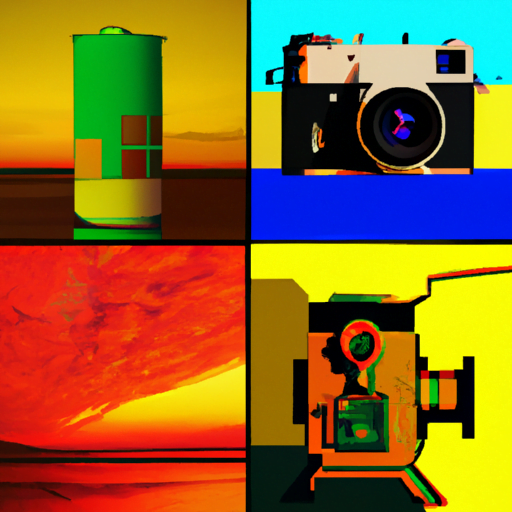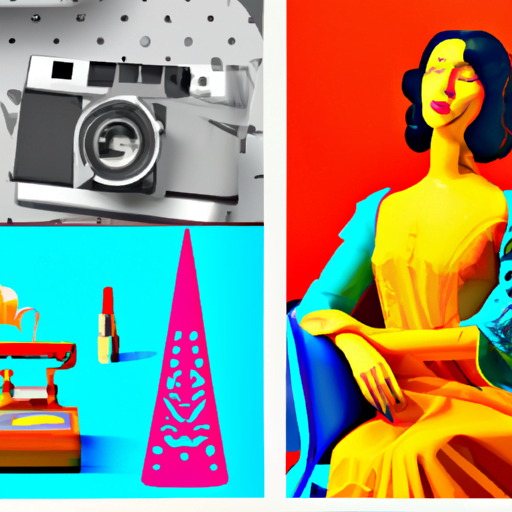
-
Table of Contents
- The Use of Photomanipulation in Surreal Digital Art
- What is Photomanipulation?
- Techniques Used in Photomanipulation
- Examples of Photomanipulation in Surreal Digital Art
- 1. “The Persistence of Memory” by Salvador Dali
- 2. “The Treachery of Images” by René Magritte
- 3. “The Son of Man” by René Magritte
- The Impact of Photomanipulation in Surreal Digital Art
- Summary
The Use of Photomanipulation in Surreal Digital Art

Surreal digital art has gained significant popularity in recent years, captivating audiences with its dreamlike and imaginative compositions. One of the key techniques used in creating these surreal artworks is photomanipulation. By combining various elements from different photographs, artists can create visually stunning and thought-provoking pieces that challenge reality and push the boundaries of creativity. In this article, we will explore the use of photomanipulation in surreal digital art, its techniques, and its impact on the art world.
What is Photomanipulation?
Photomanipulation is the process of altering or manipulating photographs to create a new composition. It involves combining multiple images, adjusting colors, adding or removing elements, and applying various effects to achieve the desired result. In surreal digital art, photomanipulation allows artists to create scenes that are impossible in reality, blurring the line between the real and the imaginary.
Techniques Used in Photomanipulation
Photomanipulation in surreal digital art involves a wide range of techniques that artists employ to bring their visions to life. Some of the commonly used techniques include:
- Compositing: Artists combine multiple images to create a cohesive composition. They carefully select and blend different elements, such as landscapes, objects, and people, to create a harmonious and visually striking scene.
- Masking: Masking is a technique used to selectively reveal or hide parts of an image. Artists use masks to seamlessly blend different elements together, creating a smooth transition between different parts of the composition.
- Color grading: Color grading plays a crucial role in setting the mood and atmosphere of a surreal artwork. Artists manipulate the colors of the images, adjusting the saturation, contrast, and hue to create a cohesive and visually appealing palette.
- Texture blending: Texture blending involves overlaying different textures onto an image to add depth and visual interest. Artists use textures to create surreal and otherworldly effects, giving their artworks a unique and captivating look.
- Distortion: Distortion techniques, such as liquify or warp, are used to manipulate the shape and form of elements within an image. Artists can stretch, twist, or warp objects to create a sense of surrealism and visual intrigue.
Examples of Photomanipulation in Surreal Digital Art
Photomanipulation has been widely used by artists to create stunning surreal digital artworks. Let’s explore some notable examples:
1. “The Persistence of Memory” by Salvador Dali
Salvador Dali’s iconic painting “The Persistence of Memory” is a prime example of photomanipulation in surreal art. Dali combined various elements, such as melting clocks and distorted landscapes, to create a dreamlike and thought-provoking composition. The use of photomanipulation techniques allowed Dali to challenge the viewer’s perception of reality and create a lasting impact.
2. “The Treachery of Images” by René Magritte
René Magritte’s famous painting “The Treachery of Images” is another example of photomanipulation in surreal art. The artwork features a realistic depiction of a pipe with the text “Ceci n’est pas une pipe” (This is not a pipe) written below it. Magritte’s use of photomanipulation challenges the viewer’s understanding of representation and reality, highlighting the subjective nature of perception.
3. “The Son of Man” by René Magritte
René Magritte’s “The Son of Man” is yet another example of photomanipulation in surreal art. The painting depicts a man in a suit with an apple obscuring his face. By manipulating the image and adding the apple, Magritte creates a sense of mystery and intrigue, inviting the viewer to question the identity and intentions of the subject.
The Impact of Photomanipulation in Surreal Digital Art
The use of photomanipulation in surreal digital art has had a profound impact on the art world. It has opened up new possibilities for artists to express their creativity and explore the boundaries of imagination. Some of the key impacts include:
- Expanded artistic expression: Photomanipulation allows artists to create scenes and compositions that would be impossible to capture in a single photograph. It provides a platform for artists to express their unique visions and ideas, pushing the boundaries of traditional art forms.
- Engaging storytelling: Surreal digital art often tells captivating stories through its compositions. Photomanipulation techniques enable artists to create visually compelling narratives, evoking emotions and sparking the viewer’s imagination.
- Increased accessibility: The advent of digital tools and software has made photomanipulation more accessible to artists around the world. Artists no longer need expensive equipment or access to a physical darkroom to create surreal digital artworks. This accessibility has democratized the art form, allowing a wider range of artists to participate and contribute to the genre.
- Evolution of artistic techniques: The use of photomanipulation has pushed the boundaries of traditional artistic techniques. Artists are constantly experimenting with new tools and methods to create unique and visually stunning compositions. This evolution has led to the emergence of new art movements and styles within the realm of surreal digital art.
Summary
Photomanipulation plays a vital role in the creation of surreal digital art. Through techniques such as compositing, masking, color grading, texture blending, and distortion, artists can bring their imaginative visions to life. Notable examples like Salvador Dali’s “The Persistence of Memory” and René Magritte’s “The Treachery of Images” and “The Son of Man” showcase the power of photomanipulation in challenging reality and sparking the viewer’s imagination.
The impact of photomanipulation in surreal digital art is far-reaching, expanding artistic expression, enabling engaging storytelling, increasing accessibility, and driving the evolution of artistic techniques. As technology continues to advance, we can expect photomanipulation to play an even more significant role in shaping the future of surreal digital art.
